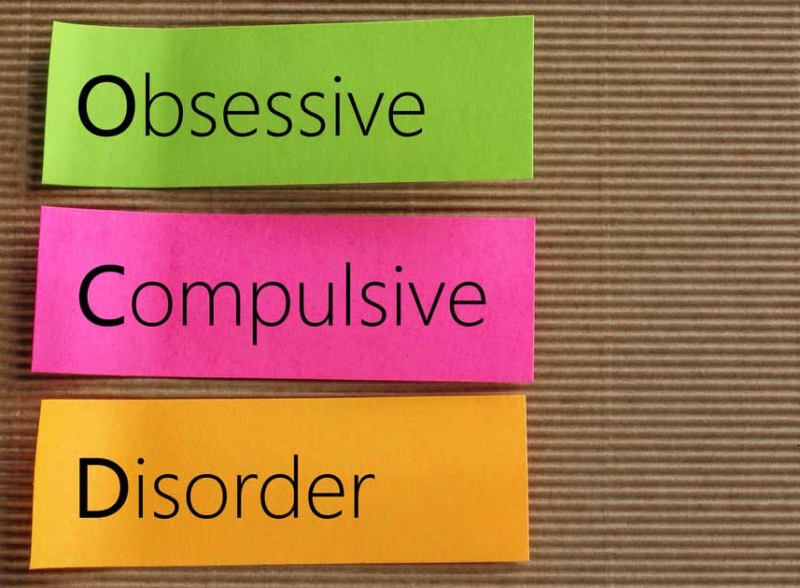Obsessive Compulsive Disorder (OCD) tend to be used commonly to describe any form of aversion to dirt. However it is a real disorder that can be quite distressing for people who suffer from it. It’s not just liking to wash your hands or using hand sanitizer fifty times a day, it’s much more than that. For a person who actually suffers from OCD, it’s not about personal preferences or desires, but actual compulsions- things that they absolutely MUST do.
As with many mental illnesses, most people tend to either refuse to acknowledge it, sometimes alluding that it only happens to people of a certain race, or underestimate the seriousness of OCD. However, it’s a life-altering mental condition that can happen to anyone regardless of race or gender.
OCD can cause anxiety and generally make things difficult not only for the people who have it, but also for their families and friends.
OCD can present in different ways and because of this it is important that a professional make an official diagnosis to confirm or rule out OCD.
Generally, symptoms may appear in life and by adulthood, most cases of OCD have already developed.
OCD is classified as an anxiety disorder by the Diagnostic and Statistical Manual (DSM).
Anxiety is something that is very common. However, it is only when it is constant, chronic, and extreme, like in cases of OCD and other disorders, that it becomes a serious problem. Generally, OCD presents as extreme anxiety associated with specific triggers that in turn require the victim to take a particular action or perform a specific ritual so that the anxiety will abate. These compulsions can take on many different forms. For example one person might need to check their locked door 9 times at exactly 9pm, while another person may need to wash their hands every hour.

Recognizing OCD
The following are some of the more common signs of OCD, however a specific individual’s OCD may manifest in only some of these ways, or maybe none of them. It’s also possible that a person might exhibit one or two of these behaviors and *not* have OCD, hence the need for a professional evaluation, which may reveal a different anxiety disorder or something else. Here are some common signs to look for.
For a person with OCD, certain things must be performed in a very specific way; sometimes this means at a specific time of day, every day, or under specific circumstances. It may even require a specific series of actions to be repeated exactly a certain number of times. Generally, it may have something to do with thoughts or feelings of safety and security, like locking and unlocking a door, shutting windows, or making sure the stove is off. While these are certainly good habits to have, OCD is relentless in that it causes the victim to constantly check these things far more often than actually necessary.
As you might expect, this can significantly interfere with one’s life. Unfortunately, the alternative is almost impossible. When people do not give in to their urges, they are overwhelmed with fear, anxiety, and stress, which may quite literally render them paralyzed, unable to carry out normal activities of daily living.
One of the ways OCD can make life hard not just for the victims, but those in their lives, is the way it destroys confidence. A person with OCD may have incredible difficulty putting faith in others, particularly when it comes to matters directly pertaining to the victim. Regardless of what they are told, they may continue to wonder ‘what if’… and imagine the most horrible scenarios, regardless of how remote or unlikely, or how many times evidence to the contrary is presented. As with the fear and anxiety itself, the doubt is at an extreme, pretty much inconsolable level.
Because OCD tends to attach fear and anxiety to a specific behavior, sometimes it is possible to identify when the attacks first begin. Some people may notice that a particular action or pattern of behavior suddenly has anxiety associated with it, requiring a specific ritual, and failure to comply can have disastrous results. This could be thought of as a telltale sign of OCD or another disorder if such negative thoughts tend to hang around or recur, given that normal people may have these thoughts on occasion, but be able to move past them.
For OCD victims, the triggers can derail their thoughts and take over their behaviors throughout the day. When it comes to stress, a person with OCD isn’t just bothered or inconvenienced by it- they are all but crippled.

Getting help
While OCD is definitely life-changing, there are things that can help. Medical resources include antidepressants, as well as cognitive behavioral therapy (CBT). For example, a type of cognitive behavioral therapy known as exposure and response prevention (ERP) can be very helpful. By seeking to introduce OCD triggers and prevent the ritual responses, ERP serves to weaken, and even eliminate the bond between the fear and the ritual fabricated to relieve it.
Otherwise, strong social support from friends and family can play a role in helping people with OCD feel better about themselves, and achieve better results from their treatment sessions.
Hopefully this has enlightened you about OCD. It makes life difficult for the person who has it, interfering with education, jobs, and even social and romantic relationships. Fortunately, OCD is receiving more and more attention, thanks to some celebrities such as David Beckham and Leonardo di Caprio who are living with the condition and as a result, people are more aware there are treatments that can make living with OCD easier, if not resolving it entirely.
If you or someone you know is experiencing symptoms of OCD, seek a professional evaluation immediately, and get the help you need to get your life back to normal.






